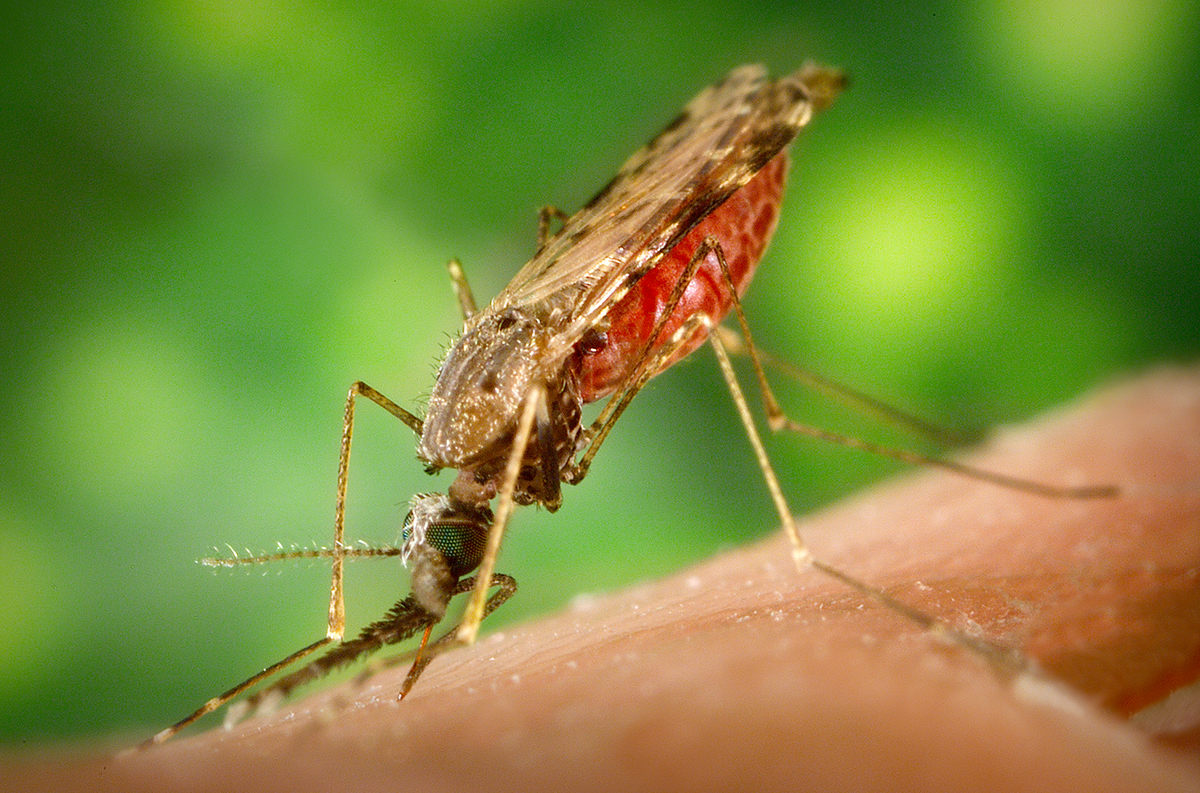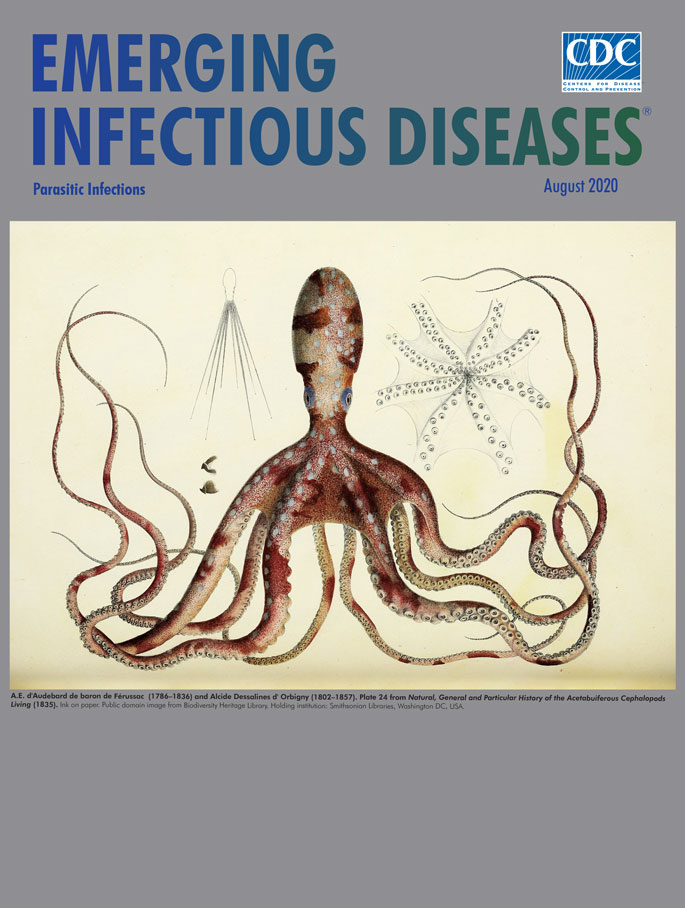Emerging parasitic disease mimics the symptoms of visceral leishmaniasis in people - National Institutes of Health
Emerging parasitic disease mimics the symptoms of visceral leishmaniasis in people - National Institutes of Health |
| Posted: 01 Oct 2019 12:00 AM PDT  Media Advisory Tuesday, October 1, 2019 WhatA new study published this week online in Emerging Infectious Diseases suggests that transmission of a protozoan parasite from insects may also cause leishmaniasis-like symptoms in people. The parasite, however, does not respond to treatment with standard leishmaniasis drugs. The research was conducted by scientists at the Federal Universities of Sergipe and São Carlos, the University of São Paulo, and the Oswaldo Cruz Foundation, all in Brazil, along with investigators at the National Institute of Allergy and Infectious Diseases (NIAID), part of the U.S. National Institutes of Health. Leishmaniasis is a parasitic disease found in parts of the tropics, subtropics, and southern Europe. It is classified as a neglected tropical disease and is often transmitted by the bite of some sand flies. The most common forms of leishmaniasis are cutaneous, which causes skin sores, and visceral, which affects several internal organs (usually spleen, liver, and bone marrow). According to the World Health Organization, each year between 50,000 and 90,000 people become sick with visceral leishmaniasis (kala-azar), a form of the disease that attacks the internal organs and is fatal in more than 95 percent of cases left untreated. During the last several decades, researchers have described rare cases of patients co-infected with both Leishmania and other groups of protozoan parasites that usually infect insects, including Crithidia. The current study of parasites isolated from a Brazilian patient confirms that Crithidia parasites also can infect people. The 63-year-old patient initially sought treatment for the symptoms of visceral leishmaniasis, including weight loss, fever, anemia, and an enlarged liver and spleen. However, after eight months of standard leishmaniasis treatment, the patient's symptoms had not improved. The patient developed widespread skin lesions with poorly defined edges (unlike the small lesions with well-defined edges that sometimes appear after treatment for visceral leishmaniasis) and ultimately died. To determine the cause of disease, researchers cultured parasites taken from the patient's bone marrow and skin lesions, sequenced their genomes, and discovered that the parasites were not closely related to known disease-causing Leishmania parasites. Instead, they were more closely related to Crithidia fasciculata, a parasite that usually colonizes mosquitoes. To confirm that these Crithidia parasites could infect mammals, the researchers exposed mice to the parasites isolated from the patient, both intravenously and by injection into the skin, and found that both types of parasite infected the liver. The parasites collected from the patient's skin also caused skin lesions in the mice. The study raises concerns that the Brazilian patient might not be an isolated case. If Crithidia infections represent an emerging infectious disease in people, there will be an urgent need to develop novel effective treatments, the researchers write. They expressed concern that the disease may be mosquito-borne because Anopheles and Culex mosquitoes can host the Crithidia parasite. More research will be needed to find other human cases, confirm the parasite's range and host species, and discover potential treatments, the authors note. ArticleMaruyama et al. Non-Leishmania Parasite in Fatal Visceral Leishmaniasis–like Disease, Brazil. Emerging Infectious Diseases DOI: 10.3201/eid2511.181548 (2019). WhoJosé M. Ribeiro, M.D., Ph.D., Chief of the Vector Biology Section in NIAID's Laboratory of Malaria and Vector Research, is available for comment on this study. NIAID conducts and supports research — at NIH, throughout the United States, and worldwide — to study the causes of infectious and immune-mediated diseases, and to develop better means of preventing, diagnosing and treating these illnesses. News releases, fact sheets and other NIAID-related materials are available on the NIAID website. About the National Institutes of Health (NIH): NIH, the nation's medical research agency, includes 27 Institutes and Centers and is a component of the U.S. Department of Health and Human Services. NIH is the primary federal agency conducting and supporting basic, clinical, and translational medical research, and is investigating the causes, treatments, and cures for both common and rare diseases. For more information about NIH and its programs, visit www.nih.gov. NIH…Turning Discovery Into Health® |
| Posted: 19 Jul 2020 12:00 AM PDT Author affiliation: Centers for Disease Control and Prevention, Atlanta, Georgia, USA This month's cover illustration of an octopus comes from the book Natural, General and Particular History of the Acetabuiferous Cephalopods Living (see the bibliography for the full title). This voluminous study of cephalopods was completed by a pair of 19th century French naturalists, though not exactly as collaborators. A.E. d'Audebard de baron de Férussac wrote the introduction and the first 11 parts; Alcide Dessalines d'Orbigny revised and completed the book. Férussac, a professor of geography and statistics at the École d'état-major in Paris, is now chiefly recognized for his studies of molluscs. D'Orbigny, a professor of paleontology at the Paris Muséum National d'Histoire Naturelle, collected natural specimens from South America and corresponded with Charles Darwin. Completed in the 1830s, this detailed illustration does not identify the species of octopus represented, though it is most likely a common octopus, which would have been 1–3 feet long and weighed 10–20 pounds. Nonetheless, it displays the animal's characteristic features: bulbous head, wide-angled eyes that provide a panoramic view, 8 whip-like arms festooned with suckers, and mottled and flecked colors. One companion image resembling a multipronged compass protractor reveals the scale and reach of the straightened arms, and on first glance, a second drawing of the creature's underside could pass for a splayed umbrella. An undeserved reputation for ferocity and belligerence has been foisted on the octopus. In the first century ce, Pliny the Elder decried, "no animal is more savage in causing the death of a man in the water." The air of mystery attached to these intelligent, curious creatures befits them, no doubt spurred by their physical appearance. Anthropologist Roland Burrage Dixon references a Hawaiian creation myth that describes a primordial ocean in which "swims the octopus, the lone survivor from an earlier world." Given their outward appearance, labeling these creatures as alien or otherworldly does not seem farfetched. Examining their anatomy does not dispel those notions. Their arms, which contain more neurons than their brains, collect and convey an array of sensory information and may even have distinct personalities. Of their three hearts, two move blood from their gills and the third circulates their blood. Their blue blood is tinted by the copper-transporting protein hemocyanin, which is more efficient than hemoglobin for transporting oxygen in frigid and oxygen-poor ocean water. Octopuses are acknowledged for their adeptness at solving intricate problems and using tools, curiosity, and even mischief. Able to mimic colors and textures and to squeeze into astonishingly compact spaces, these cephalopods excel as both hunters and survivalists. Science writer Katherine Harmon Courage writes, "The boneless octopus must avoid becoming lunch for sharks, eels, fish and even killer whales. But not all of the organisms that feed on octopuses are such charismatic megafauna." Parasitic organisms occur in all animal species, are as diverse as their host species, and derive their sustenance, during at least part of their lifecycles, at the expense of their hosts. This ubiquitous template of coexistence has persisted and evolved and given rise to euryxenous parasites that infect a spectrum of unrelated hosts; stenoxenous parasites that prefer closely related hosts; and oioxenous parasites that limit themselves to single species of host. Among the latter two types is a phylum of highly specialized parasites known as Rhombozoa or Dicyemida, which dwell only in the kidneys of cephalopods. Some of the estimated 250–300 known species of octopus are so similar that researchers differentiate them by examining those parasites. Courage writes, "These microorganisms are often unique not just to the octopus but also to a particular species of octopus. In fact, these very specific, kidney-dwelling species can even be used to tell one octopus species from another. (With such variable physical attributes, octopus specimens can be difficult to parse.)" Parasites can cause a range of diseases in humans, domestic animals, and wildlife. Myriad parasitic infections range from asymptomatic to mild to severe to fatal. They are encountered by hosts of every species on every continent and in every body of water. A confluence of factors―including deforestation, urbanization, and development, international travel and tourism, contemporary agricultural practices, and displacement of wildlife, sanitation problems, and growing antimicrobial and insecticide resistance―encumbers efforts to control parasitic infections. Discerning the abundance, diversity, specialization, and history of parasitic organisms, such as the curious case of the finicky Rhombozoa, may yield information with potential to improve our understanding of other parasitic infections. The conclusions, findings, and opinions expressed by authors contributing to this journal do not necessarily reflect the official position of the U.S. Department of Health and Human Services, the Public Health Service, the Centers for Disease Control and Prevention, or the authors' affiliated institutions. Use of trade names is for identification only and does not imply endorsement by any of the groups named above. |
| You are subscribed to email updates from "parasitic diseases list" - Google News. To stop receiving these emails, you may unsubscribe now. | Email delivery powered by Google |
| Google, 1600 Amphitheatre Parkway, Mountain View, CA 94043, United States | |

Comments
Post a Comment